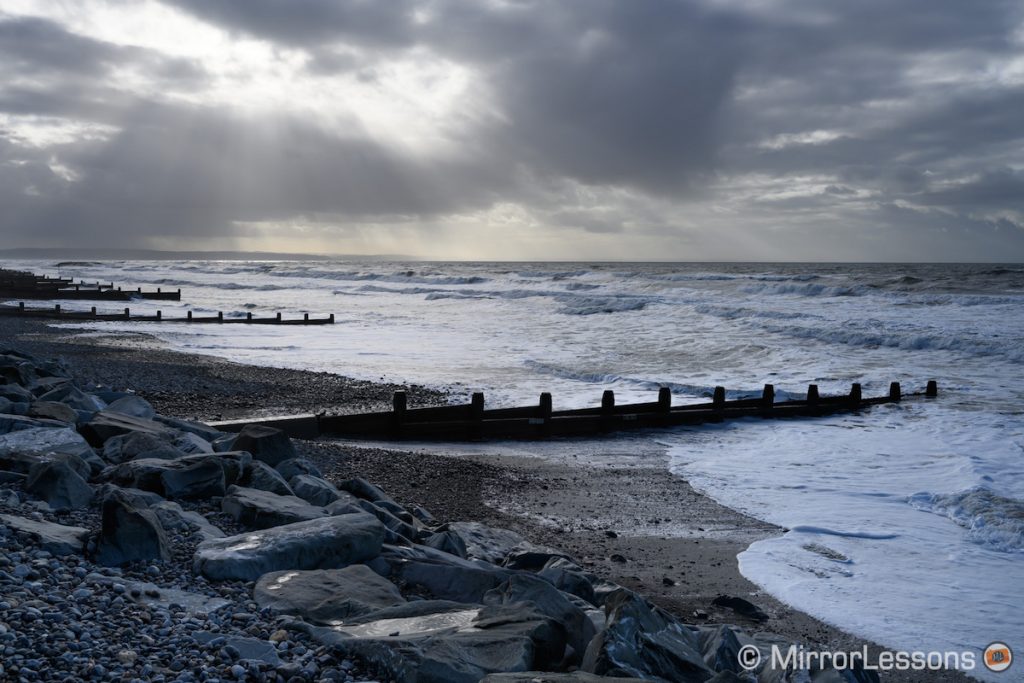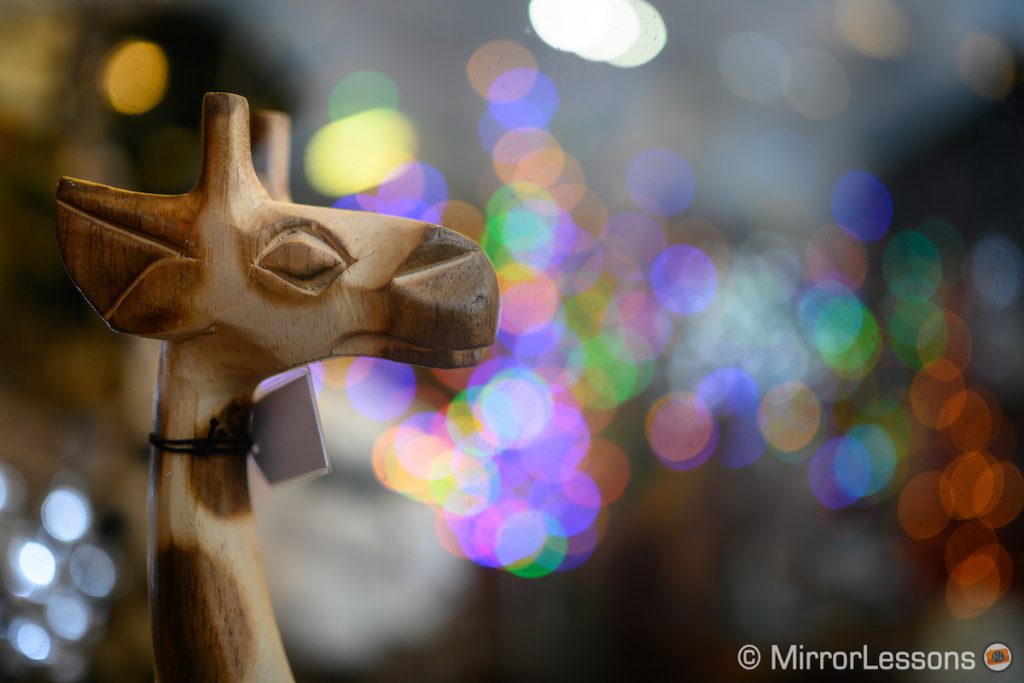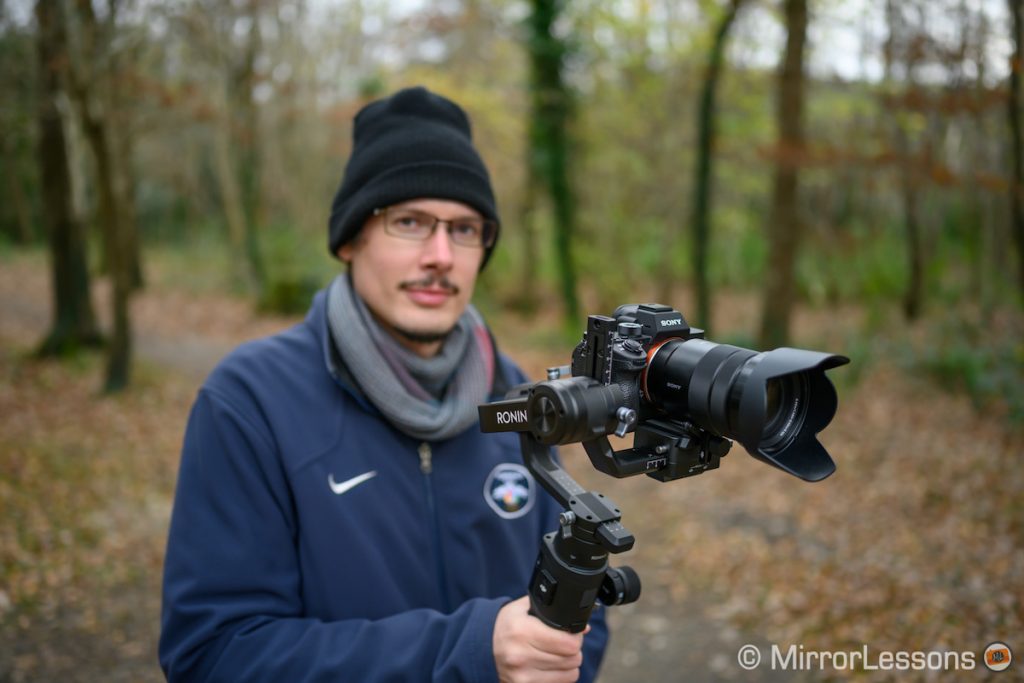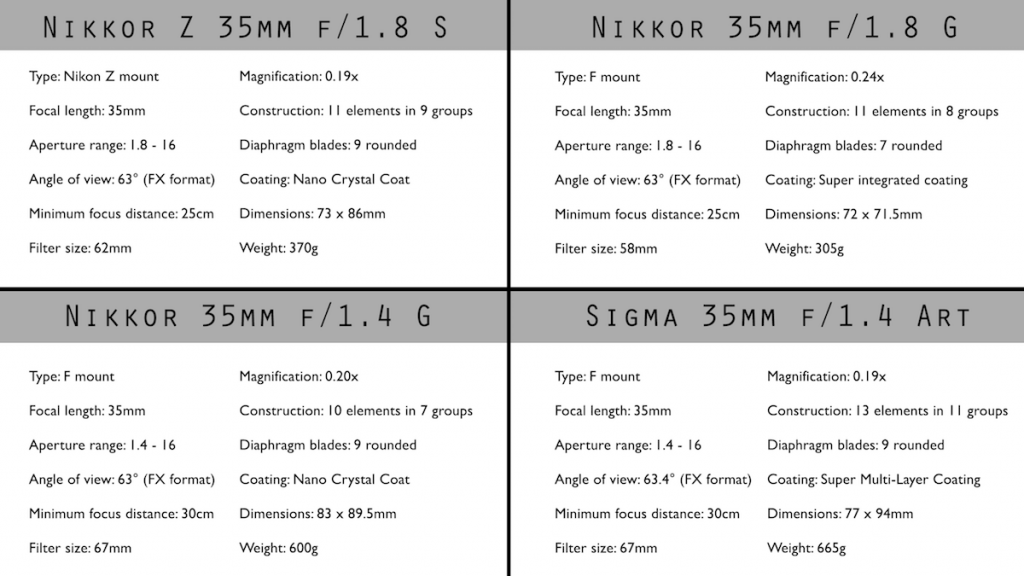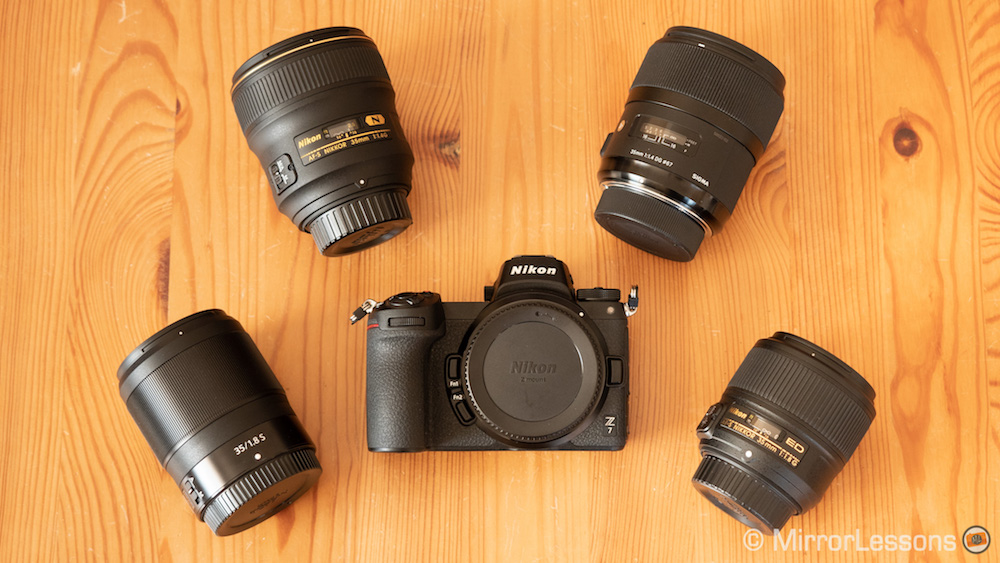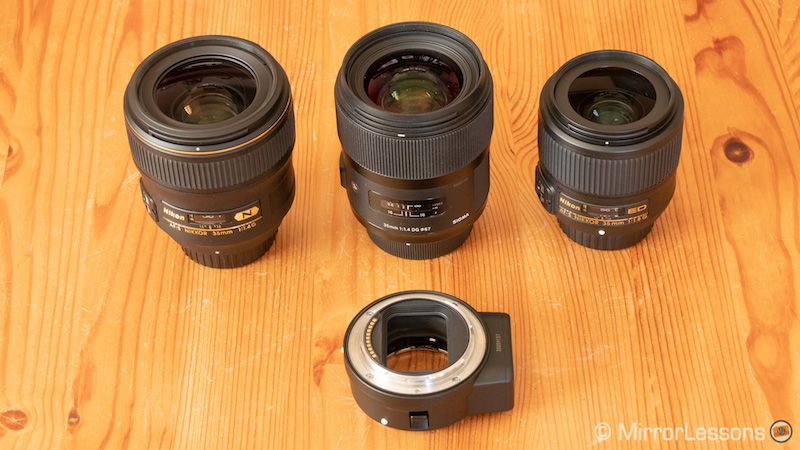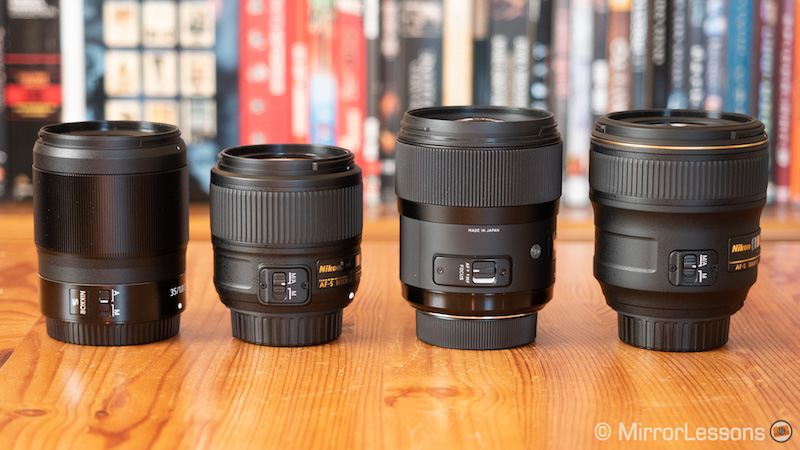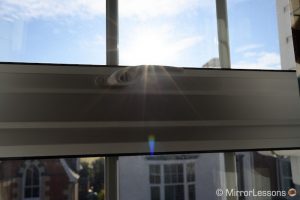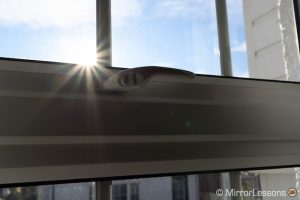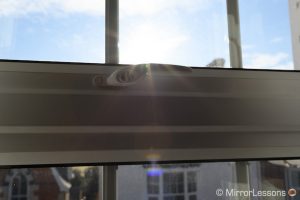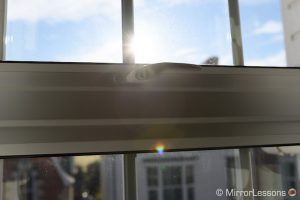When the Nikon Z system was announced in 2018, much fanfare was made over the new mount which, in addition to being 55mm in diameter, also has a short flange depth of 16mm. This combination, according to Nikon, should allow for a new dimension in optical performance for current and future optics.
One of three lenses launched alongside the new Z cameras was the Z 35mm f/1.8S. Because we had a full month with the lens, we decided to dedicate much of our time to testing it against three of its main competitors for the Nikon F mount, all of which can be used with full automation* on Z cameras via the FTZ adapter.
Our aim was to see just how far Nikon has pushed the boundaries of optical quality and more importantly, how much of an impact these improvements will have on real-world photography. We hope you enjoy browsing through our findings!
*Note: On the Z7, the EXIF data of certain lens models isn’t precise (for example, both the Sigma and Nikkor 1.4 were registered as 35mm 1.4G).
Ethics statement: We borrowed these four lenses to conduct our comparison on the Nikon Z7. We were not asked to write anything about these products, nor were we provided with any sort of compensation. Within the article, there are affiliate links. If you buy something after clicking the link, we will receive a small commission. To know more about our ethics, you can visit our full disclosure page. Thank you!
[toc heading_levels=”2″]
Main Specifications
Design and ease of use
The two lenses that are most similar in size and weight are the 1.4 primes from Nikon (600g) and Sigma (670g). They are twice as heavy as the 35mm 1.8 G and clearly outweigh the Z 35mm as well.
By attaching the FTZ adapter to the three DSLR lenses, they all increase in length and weight compared to the Z lens, which is something to consider if you’re looking for the most compact set-up possible.
Something I noticed about the two Nikkor lenses is that they are more difficult to attach to the adapter than the Sigma lens. The latter glides on smoothly whereas with the other two, there is a degree of stiffness.
All four lenses feature a high-quality construction. The Sigma has a nice all-metal barrel, the Z lens is a mix of metal and polycarbonate, and the two Nikkor DSLR lenses are predominantly made of plastic. Their focus rings all feature a ridged design that makes them easier to grab and turn but the grooves on the Z lens are shallower.
On the side of the barrel of each lens, you’ll find an AF/MF switch that lets you jump between autofocus and manual focus more quickly than if you entered the menu. The three DSLR lenses also feature a focus distance scale which is found inside a small window on the barrel.
Boxed along with each lens is a petal-shaped lens hood to help protect the front element and a clip-on lens cap.
Each lens also features its own lens coating to reduce flare and ghosting.
Optical quality: Sharpness
Sharpness is one of the aspects potential users of the Z 35mm will be most interested in since Nikon has placed such a heavy focus on the superior optical quality of its new lenses. Let’s see whether there is a tangible difference when we compare it to the three DSLR lenses.

At the fastest apertures, the 35mm 1.8 G lens is clearly the softest of the four. The other three look quite similar overall. (Note that the difference in contrast is due to slight changes in the light conditions.)

At f/1.8 and f/2, the Sigma and Nikkor 35mm 1.4 sharpen up a little but the Z lens appears to be the sharpest overall.
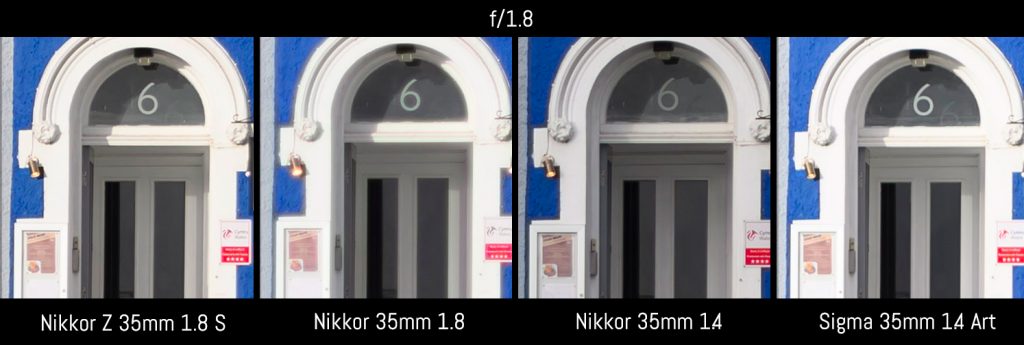

By stopping down to f/2.8, all four lenses including the 35mm 1.8 G become much sharper. At this value and beyond, it is quite difficult to tell the difference between them. All four are at their sharpest between f/4 and f/8 whereas diffraction only becomes noticeable at f/16.

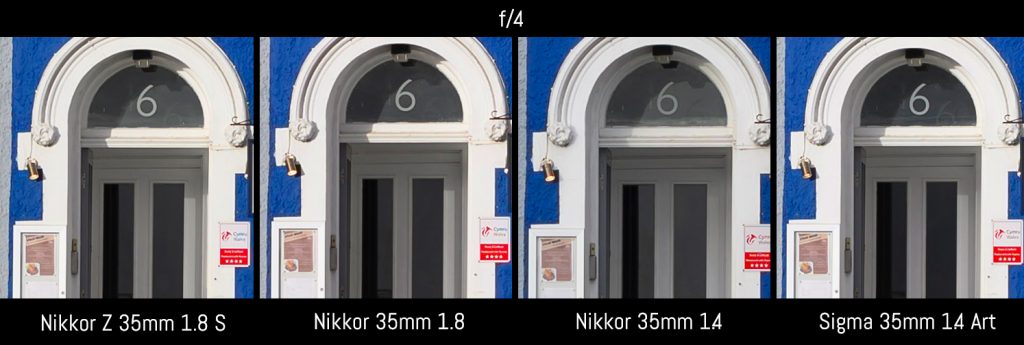


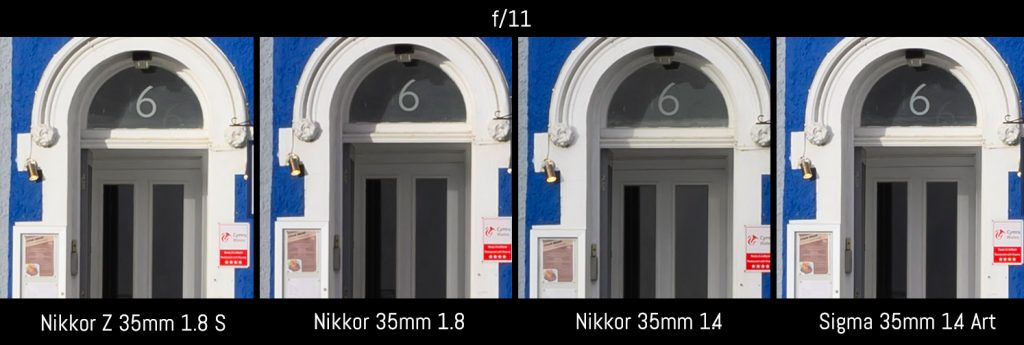
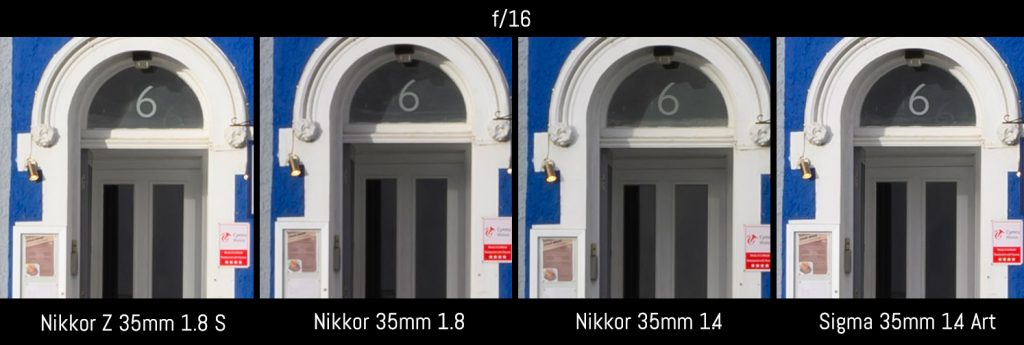
Looking at the above examples, we can’t really say that the Z lens has an advantage over its siblings at the centre in terms of sharpness. It is only by turning to the corners that we start to see some differences worth investigating.
At the fastest apertures, the Z lens is impressively sharp compared to the other three lenses. The second sharpest is the Nikkor 1.4 followed by the Sigma and the Nikkor 1.8.
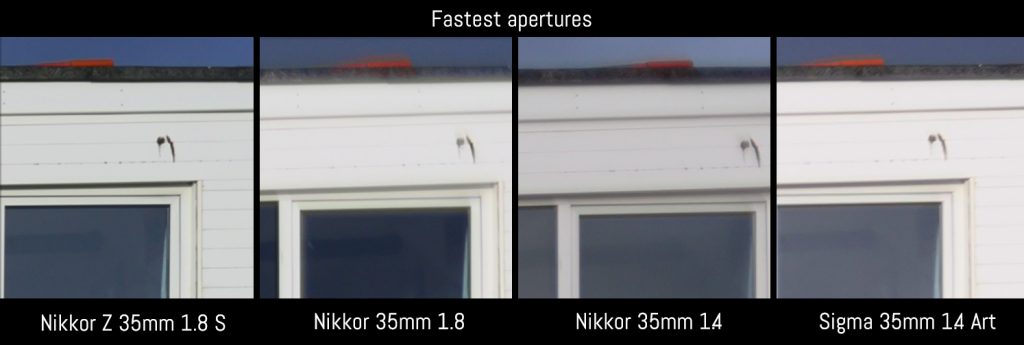
It isn’t until f/2.8 that we start to see an improvement from the three DSLR lenses, but still, the Z lens continues to outperform them.
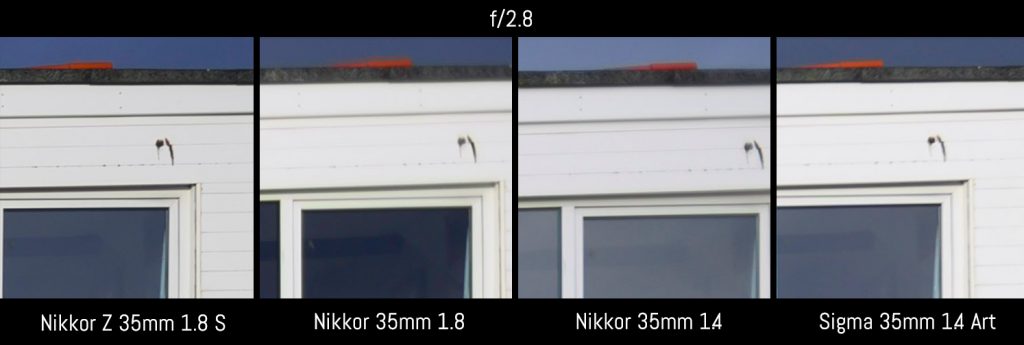
The only way to have similar results with all four is to stop down to f/5.6.
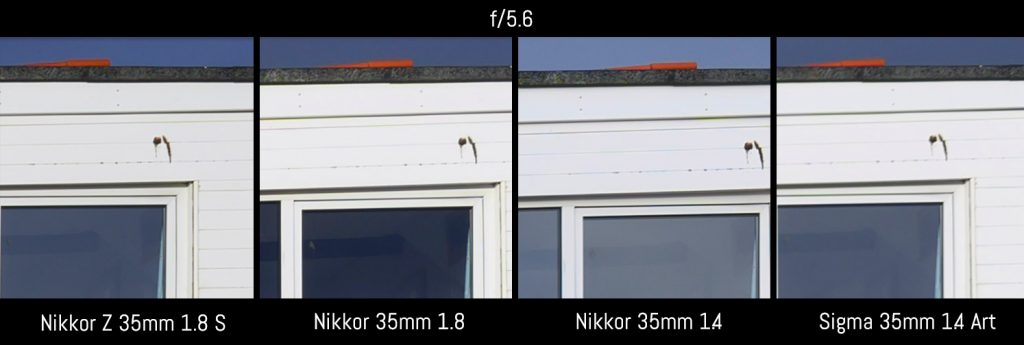
Between f/8 and f/16, all four continue to look quite similar. Diffraction begins to show at f/11 but is most evident at f/16.

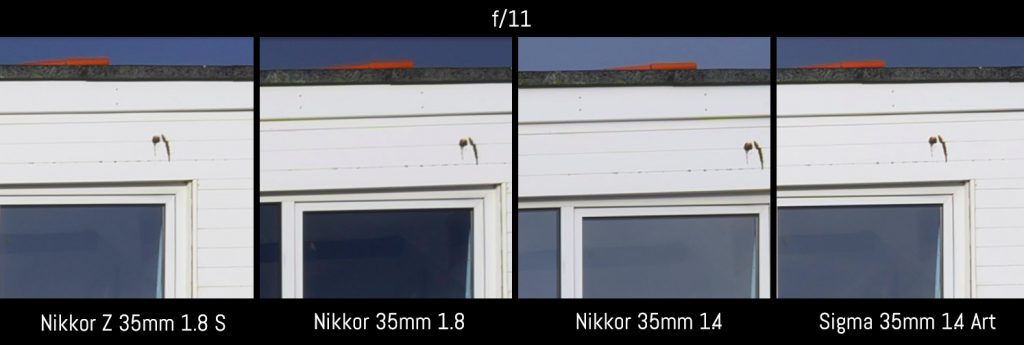
Now let’s take a quick look at how they perform between the fastest values and f/2.8 on a subject situated approximately two meters away from the camera.
Once again, the 35mm 1.8 G is the softest of the three at the fastest apertures and f/1.8. I would also say that the new Z lens looks ever so slightly sharper than the two 1.4 lenses.

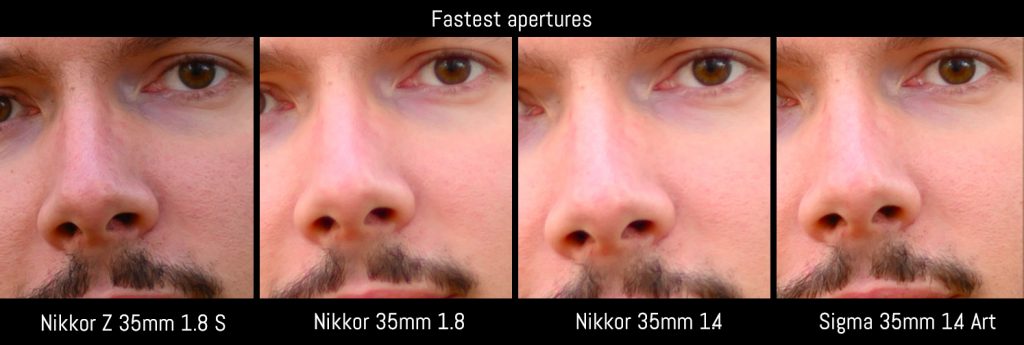
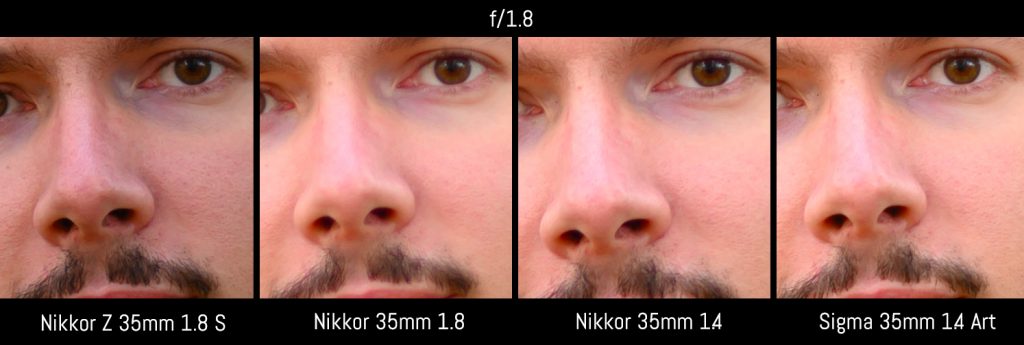
When stopped down to f/2.8 however, they all look extremely similar.
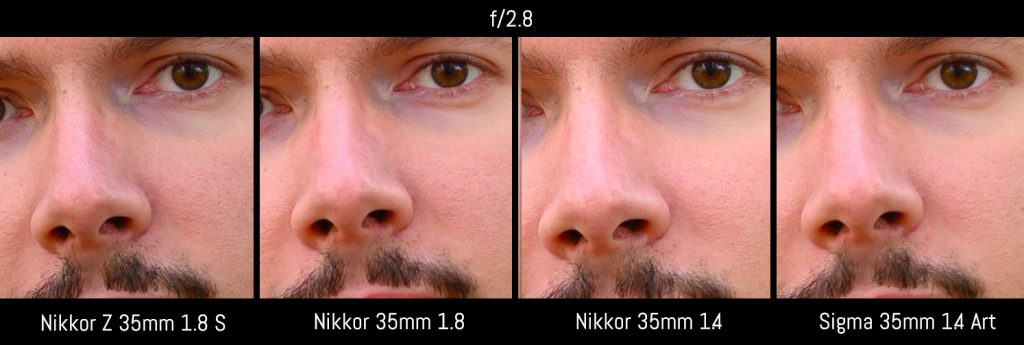
Minimum focus distance
The two 1.8 lenses both have a minimum focus distance of 25cm whereas the 1.4 lenses can focus as close as 30cm. The 35mm 1.8 G has the highest magnification (0.24x), followed by the Nikkor 1.4 (0.20x) and finally the Z lens and the Sigma (0.19x).
The real world results reflect the magnification statistics above: the 35mm 1.8 G allows you to get the closest, whereas the other three lenses look much more similar.
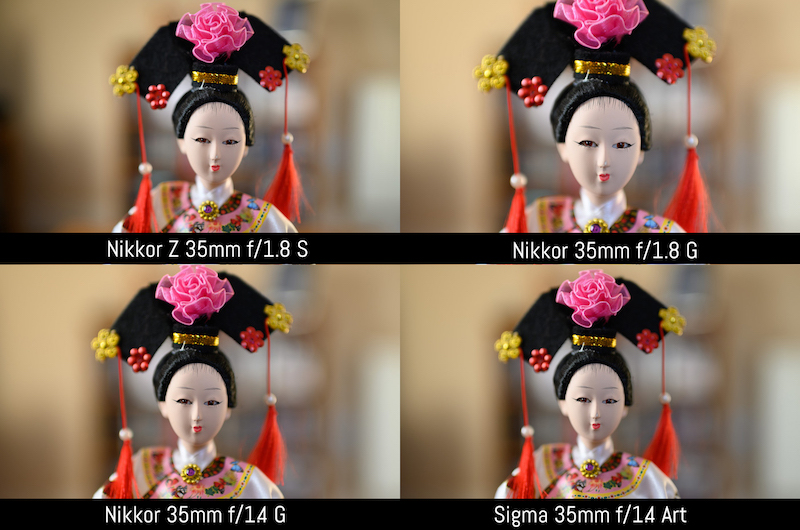
It is also worth noting that all three DSLR lenses exhibit focus breathing to some degree, whereas the new Z lens hardly suffers at all.
Optical Quality: Bokeh and other characteristics
Bokeh and depth of field
Bokeh is a term used to describe the quality of the out-of-focus areas of an image. As we can see from the crops below, the character of each lens’ bokeh is quite different at their respective maximum apertures.

The 35mm 1.8 G lens has the least pleasant bokeh of the four. In addition to being quite nervous, the specular highlights also exhibit quite a lot of unpleasant fringing that isn’t easy to eliminate. The bokeh of the Z lens is somewhat nervous as well but it displays much less fringing than its less expensive counterpart.
The two 1.4 lenses are definitely smoother and more blurred in the background than either 1.8 lens, and also display less fringing. At their shared maximum value, they also provide greater subject separation than the two 1.8 lenses. Of all four lenses, I’d say the Nikkor 1.4 has the most pleasant bokeh due to the extremely smooth rendering and near-complete lack of fringing around the out-of-focus areas.

If you stop the two 1.4 lenses down to 1.8, the Nikkor starts to look much more like the Sigma.
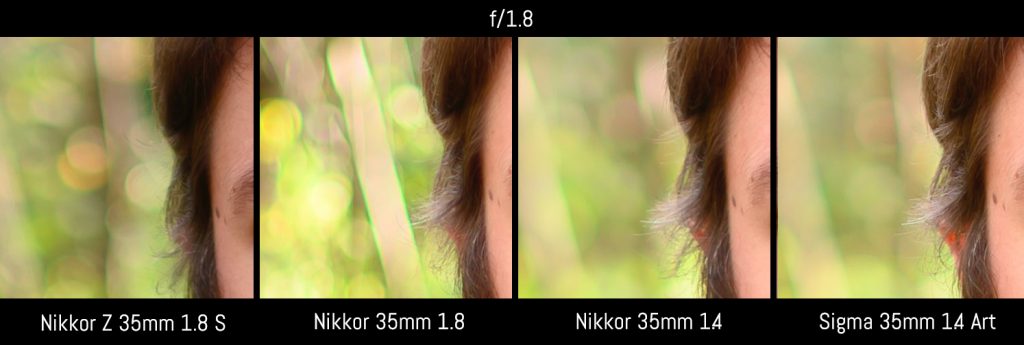
At f/2, you start to clearly see bokeh balls emerge in the examples taken with the 1.4 lenses. They both look quite similar to the Z lens at this value, whereas the 1.8 G continues to deliver an unpleasant and busy bokeh.
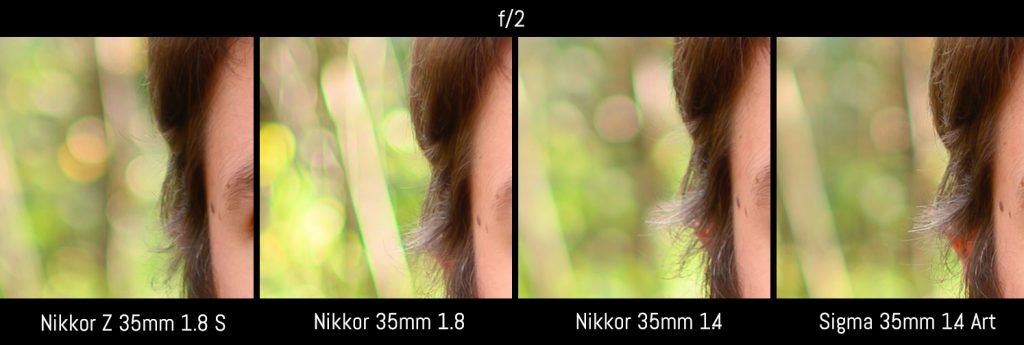
Finally at f/2.8, all four lenses have a much busier look due to the slower aperture. All four display some bokeh fringing but it isn’t nearly as severe from the 35mm 1.8 G lens. The Sigma lens seems to suffer from bokeh fringing the least.
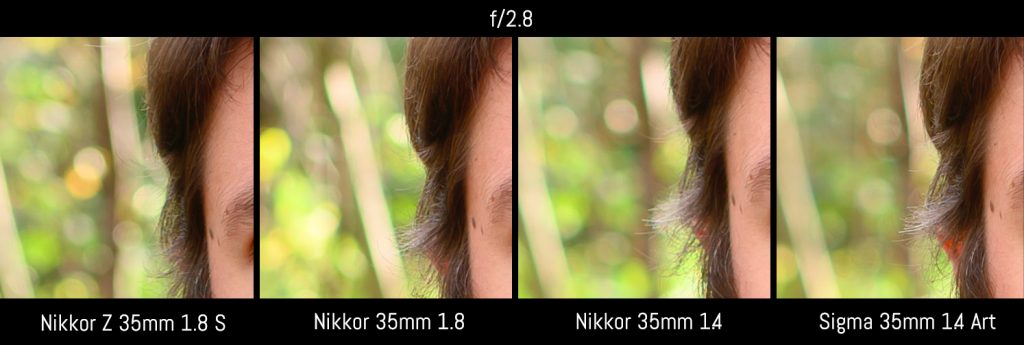
In short, I feel the Nikkor 1.4 wins in terms of bokeh rendering, which makes sense given its price. It is closely followed by the Sigma whose bokeh is very similar at 1.8 but isn’t quite as smooth and pleasant at 1.4. Both do an equally good job of separating the subject from the background thanks to their fast maximum aperture.
The Z lens has a decent bokeh but I find it somewhat busier than I’d hoped at 1.8. As for the 35mm 1.8 G, I wasn’t impressed but to be fair, it also costs less than the three lenses we’re comparing it against!
Below you can see some examples of subject separation.
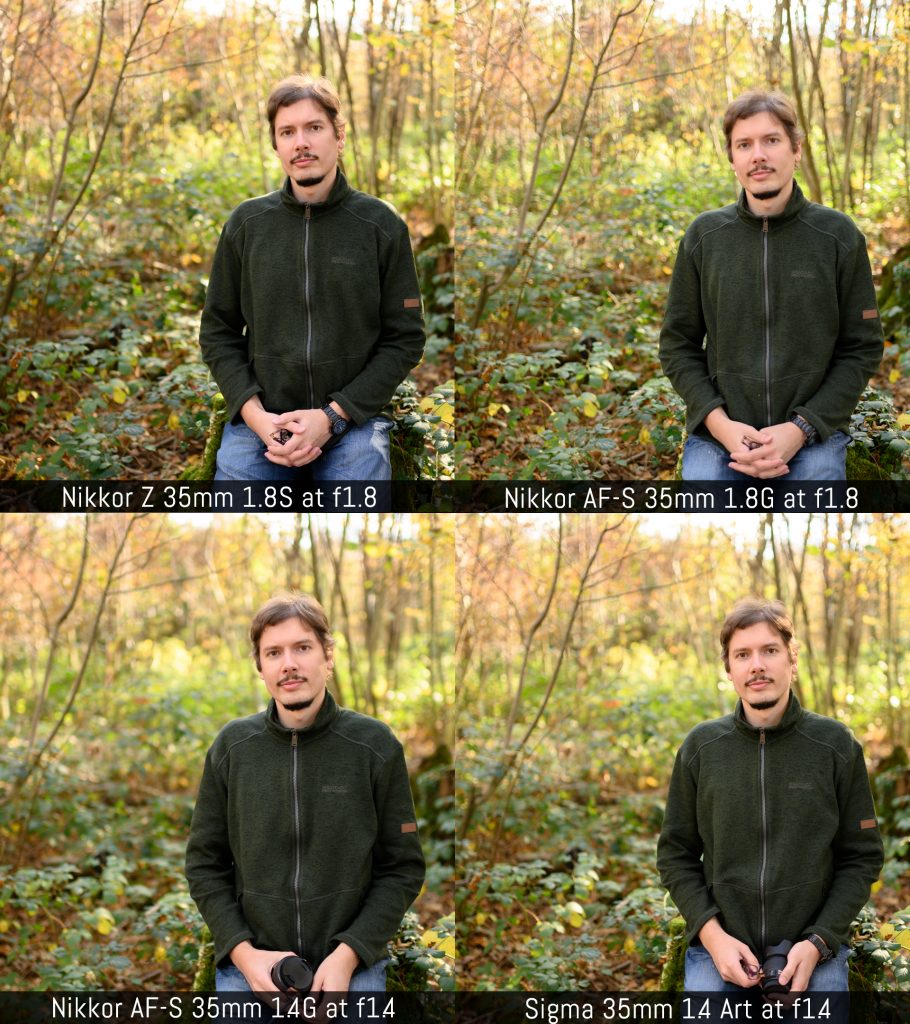
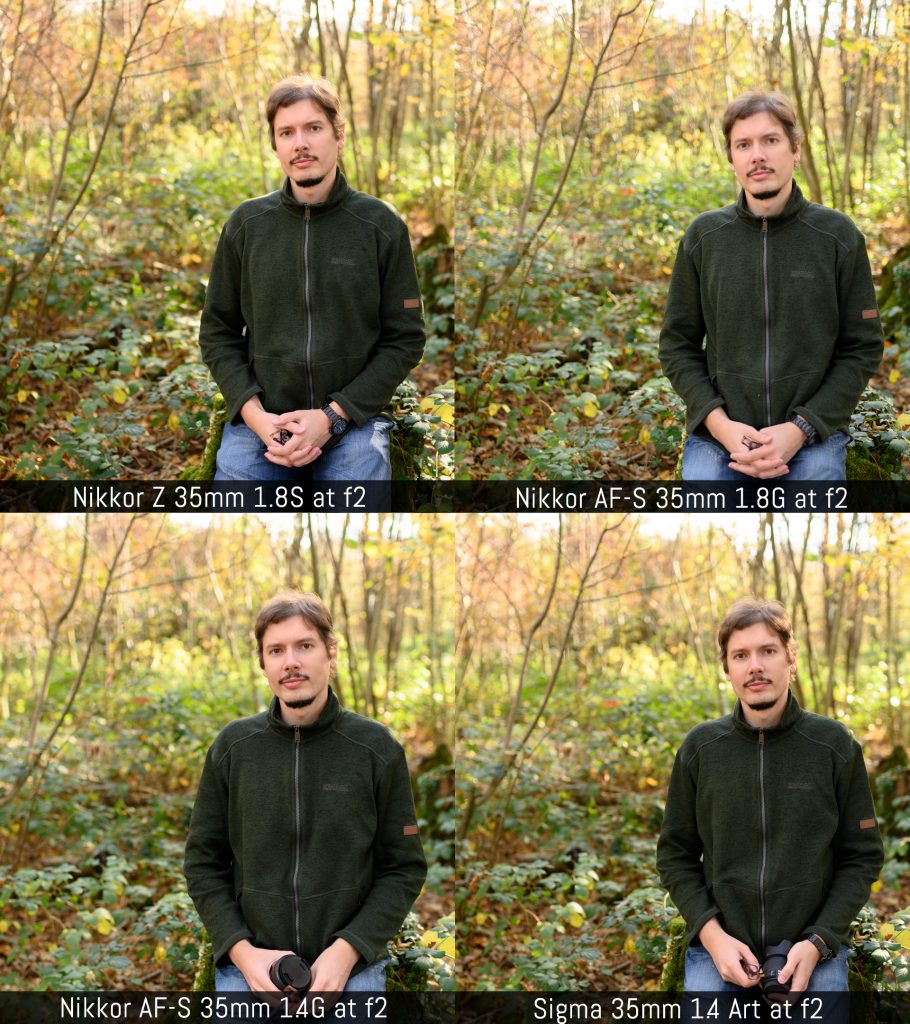
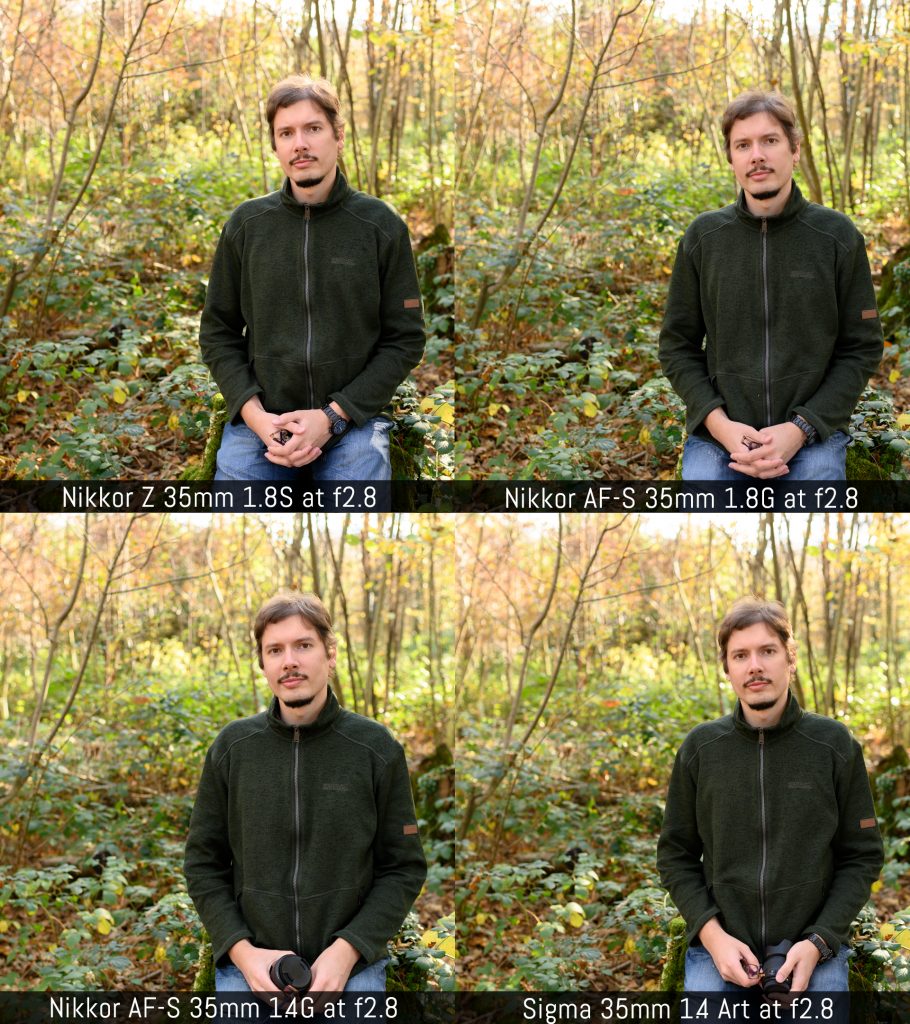
Distortion and vignetting
Nikon Z7 RAW files contain a built-in lens profile that does a good job of correcting distortion for all four lenses mentioned here, so you don’t need to manually apply the profile when you import the files into a post-processing software like Lightroom.
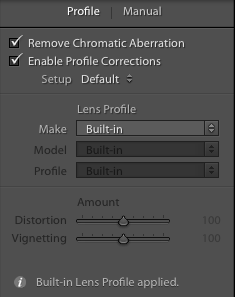
Vignetting correction is also applied to the RAW file but you may still notice some corner shading at the fastest apertures. On the Z lens, it is present up until f/2.8 whereas with the other lenses, it disappears at around f/5.6.
For the OOC JPGs, you can adjust Vignette Control in-camera by selecting between four different strengths (High, Normal, Low and Off). There is also an Auto Distortion Control option which you can turn on to reduce barrel distortion. (Note that with the Z lens, this option cannot be turned off and will therefore be greyed out and unavailable.)
Flare
All four lenses exhibit some very minor flare and ghosting in scenes with bright sources of light as you can see from the examples below.
Chromatic aberration
All four lenses suffer from chromatic aberration at the fastest apertures in both the centre and in the corners.
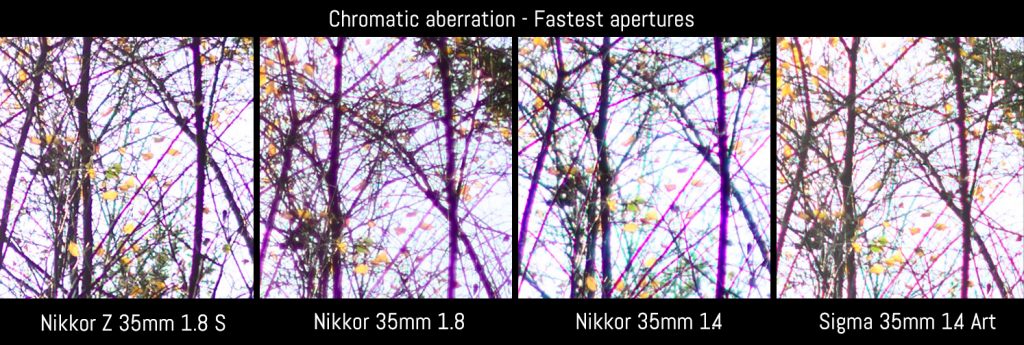
The Sigma suffers the least, showing signs until f/2.8, whereas with the other four, you have to stop down beyond f/4 for it to disappear entirely. You can rely on the dedicated CA removal tool in your post-processing software of choice to eliminate the worst of it.
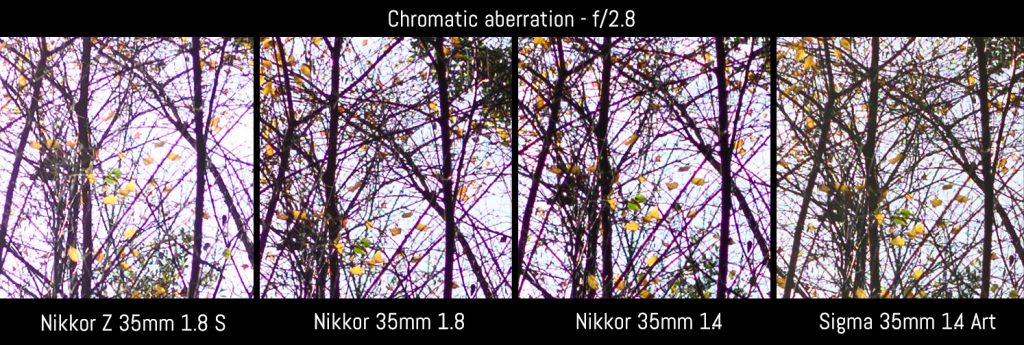
Focus
Autofocusing
When comparing the four lenses in S-AF for stills, it soon became clear that the Z 35mm is the fastest and quietest of the three. The three DSLR lenses are also very quick but the AF motor is more audible, especially in the case of the two 1.4 lenses.
For video in C-AF, the Z lens is once again the fastest of the four and is also deadly silent. The other lenses are a little slower and somewhat noisier than the native lens: the Sigma is the loudest whereas the two Nikkors make a faint crunching sound as they switch from one focus point to another.
Manual focusing
As mentioned above in the design section, all four benefit from a ribbed ring for manual focusing. Those of the DSLR lenses are rubberised and have deeper ridges whereas the ring of the Z lens is made of metal and has shallower ridges that are bunched more closely together. When the camera is in autofocus mode, the focus ring of the Z 35mm becomes a control ring to which you can assign exposure compensation or aperture changes.
Unlike the F-mount DSLR lenses, which offer traditional mechanical control over focusing, the new Z 35mm features a “focus-by-wire” mechanism whereby focusing is performed electronically. The only tangible difference we noticed is that the Z lens is smoother and moves more freely than the rings of the DSLR lenses. In terms of accuracy, all four were easy to use on the Z7 when magnification was activated.
When you hit either the minimum focus distance or infinity with the two Nikkor DSLR lenses, you will encounter some slight resistance at both ends. You can continue to turn the ring even when it reaches either extreme but the focus will no longer change.
Conclusion
When Nikon announced the Z system, they placed a lot of emphasis on the superior optical quality of their new generation of lenses. The new Z 35mm 1.8 S doesn’t disappoint but doesn’t impress either. Although it offers sharper results in the corners when set at the fastest apertures, centre sharpness is more or less identical to the two 1.4 DSLR lenses.
The thing is, good corner sharpness wide open only really matters for very specific genres such as astrophotography or specific kinds of low-light events. So unless this particular characteristic is important to you, it may make more sense to invest in the FTZ adapter for the time being and continue using whichever 35mm lens you have in your collection (if you’re already a Nikon user, that is).
But what if you aren’t already invested in the Nikon DSLR system? In this case, I would recommend the native Z lens over both Nikkor DSLR lenses. Paired with the FTZ adapter, the Nikkor 35mm 1.8 G is nearly the same price as the Z lens (just under $800), yet offers inferior optical quality, whereas the Nikkor 1.4 lens will cost you close to an eye-watering $2000.
In our opinion, the only logical substitute for the Z lens is the Sigma 35mm 1.4, whose $1150 price tag (with the adapter) is justified by the faster aperture and nicer bokeh. But let’s not forget that the Z lens brings with it some advantages that none of the DSLR lenses offer, such as a lightweight design and faster/quieter AF motor.
Choose the Nikkor Z 35mm 1.8S if you:
- are brand new to Nikon and don’t already own a 35mm for the F-mount
- need a fast and quiet AF motor
- want the most compact and lightweight 35mm lens possible
Choose the Nikkor 35mm 1.8G if you:
- want to spend as little as possible (but keep in mind that the price of this lens isn’t all that different from the native Z lens once you include the FTZ adapter)
Choose the Nikkor 35mm 1.4G if you:
- want the smoothest, most attractive bokeh possible (but keep in mind that the Sigma’s bokeh is almost as nice)
- happen to find it at a discounted price
Choose the Sigma 35mm 1.4 Art if you:
- think you might use the 1.4 aperture on a regular basis
- want a creamy bokeh without spending a fortune
Check the price of the Nikkor Z 35mm f/1.8 S on B&H Photo
Check the price of the Nikkor 35mm f/1.8 G on B&H Photo
Check the price of the Nikkor 35mm f/1.4 G on B&H Photo
Check the price of the Sigma 35mm f/1.4 Art on B&H Photo
Nikkor Z 35mm 1.8S Sample Images




